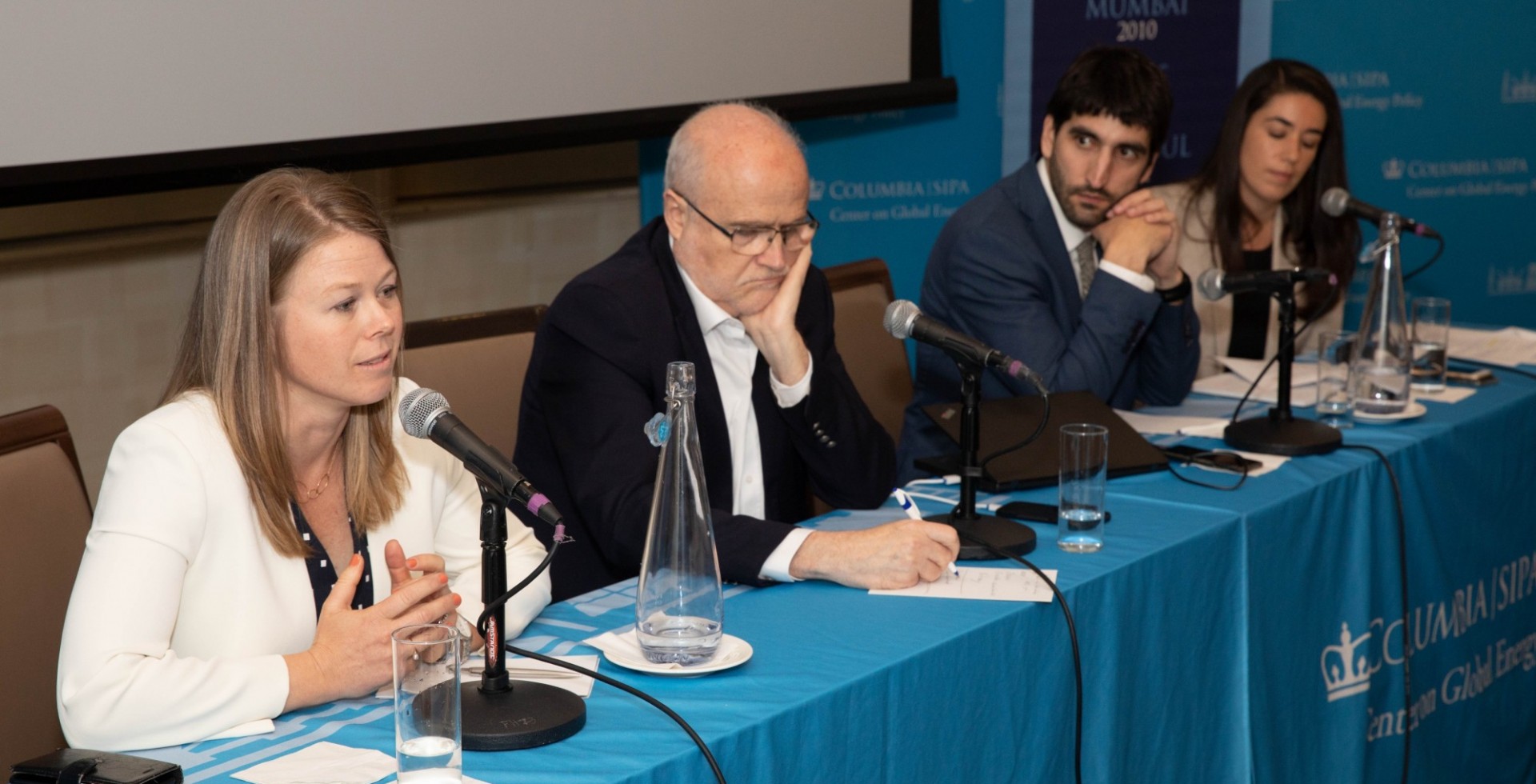Chile Spearheading Solar Development: Energy Experts Present On Campus

Three energy sector experts presented on Campus about how public policy, industry, and public sentiment can shape the future of solar energy, and how, using Chile as a model, these strategies and lessons can be applied throughout the world.
The event “Chile: Leading the Path on Solar Energy,” was held at the beginning of September as part of the 10 events celebrating the 10-year anniversary of the Columbia Global Centers. The discussion on the future of solar energy was led by Clara Bowman, General Manager of Santiago-based independent power generator AME; Carlos Finat, Executive Director of Chilean Renewable Energies Association ACERA; and Gabriel Prudencio, Head of the Sustainable Energies Division at Chile’s Ministry of Energy. Following their presentations, Sarah La Monaca, Research Associate at the Center on Global Energy Policy, led a panel discussion and Q&A session with the three executives.
Bowman presented a case study of AME’s Santiago Solar photovoltaic plant – a US$125 million, 115 MW plant that generates 200 GWh/year on 200 hectares of land located on the outskirts of Santiago’s metropolitan region.
Meanwhile, ACERA’s Finat spoke about the main drivers for the development of renewables in Chile, including increasing demand from the mining sector, electrification of land freight and human mobility, and replacement of wood as fuel for heating and cooking. This - coupled with Chile’s scarce local fossil fuel sources, environmental and climate concerns, correct regulations and a huge amount of renewables that could supply nearly 85 times the current power demand – make the country ripe for increased renewable power projects.
For his part, the Energy Ministry’s Prudencio expounded on Chile’s June 2019 commitment to reach carbon neutrality by 2050 and phase out coal-fired power plants by 2040, eight of which will be closed by 2023. Renewables have proven to be highly competitive for the country, he said, as they lower the nation’s dependence on imported fuels, provide the opportunity to become an energy exporter, and cut down on CO2 emissions, 78% of which come from the energy sector.
The country’s vision is to lead the energy transition, not only to adapt to the technological changes, but to accelerate its development and become a leader of this process in the region, the energy official said.